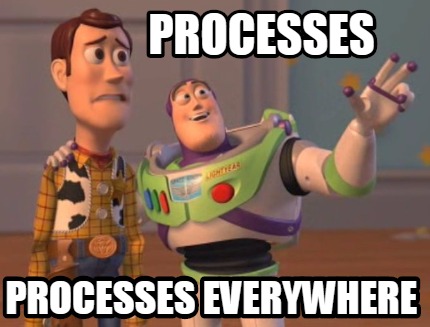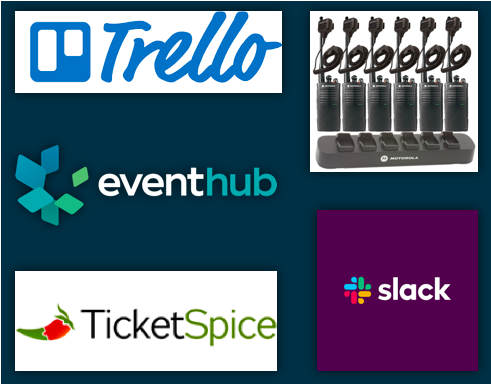This is the first of a series of articles in which we’ll cover best practices for scaling up your event and optimizing core areas of your business. Following these will enable your organization to scale, whether that means growing an annual event to its full potential, or adding new events to your portfolio.
Three building blocks of scaling up your event and optimizing your organization: Team, Processes, and Systems
Team
Structure and Empowerment in order to scale an operation, decision making must be delegated to trusted team members to create more bandwidth at the top for strategic growth planning. Delineating who has what responsibilities on the team is critical for success.
 This includes not just assigning team members to various areas of event management, but also empowering those team members to feel confident in making important decisions related to those areas.
This includes not just assigning team members to various areas of event management, but also empowering those team members to feel confident in making important decisions related to those areas.
That means it’s critical to make sure your team has the necessary training, experience, and resources to thrive in their roles, and has room to make mistakes and not be held to an unrealistic and unsustainable level of perfection. A team member who is afraid to fail withholds decision making and proactive behavior, while a team member who is trusted with their designated responsibilities will be more apt to work to the best of their ability and make decisions that will help drive the organization onward and upward.
Processes
Now that your team is set, to optimize their performance, it’s important to have organization-wide understanding of correct processes to be used for the various aspects of producing your events.
A process is defined as “a series of actions or steps taken in order to achieve a particular end.” As it applies to an event, it could be the processes for ticket sales and promotion, curating vendors, selling sponsorships, and programming the entertainment
Establishing written processes may feel like homework or unnecessary busy work, but having a blueprint for how to operate various areas of the business (including the proper chain of command for decision making, which decisions fall to which team members, etc), will pay off in the long run. When you face turnover and when people jump into projects outside of their expertise to help out in crunch time, that blueprint will be critical to avoiding breakdowns and allowing the team to be successful.
Systems
Now that you’ve established your team, and your processes, you should have the data points needed to determine what systems will allow your team to run those processes most efficiently. In other words, once you identify “who” will be operating, “what” aspects of the event operation, you are able to make smart decisions on “how” they should communicate. Here are some popular systems deployed in event management, many of which are free or have free versions:
Project Management: Trello, Asana, Base Camp
Event Programming: Sched, Whova
Accounting: Xero, Quickbooks
Ticketing: TicketSpice, Eventbrite, ShowClix
Vendor/Sponsor Management: EventHub, SalesForce, Google Sheets
Email Marketing: Mailchimp, Constant Contact, Marketo, Hubspot
Social Media Management: Hootsuite, Trello
Internal Team messaging: Slack, WhatsApp, Voxer, Calling, Texting
Day of Event: Radio, cell phone
Red/Yellow/Green
A concept worth incorporating into your systems selection and processes is Red, Yellow, and Green communication. What systems are appropriate for various urgency levels of communication? Green is when everything is going smoothly and 24 hours might be fine for a response, so email or tagging a project Trello card is fine. Yellow might be important but isn’t a house-on-fire situation that requires a response within 12 hours and can be communicated via Slack or WhatsApp. When communication is red, some aspect of your event is about to suffer a major breakdown or setback and an urgent call or text is sent, expecting an immediate response.
Conclusion
Producing events is incredibly hard, and a strong foundation is paramount for success. With the right team structure, the right processes for communication and project execution, and the right systems within which to operate, it enables an organization to work efficiently to bring their events to life. In the next article, we’ll talk about the importance of fostering and protecting a brand identify when scaling up your event.







